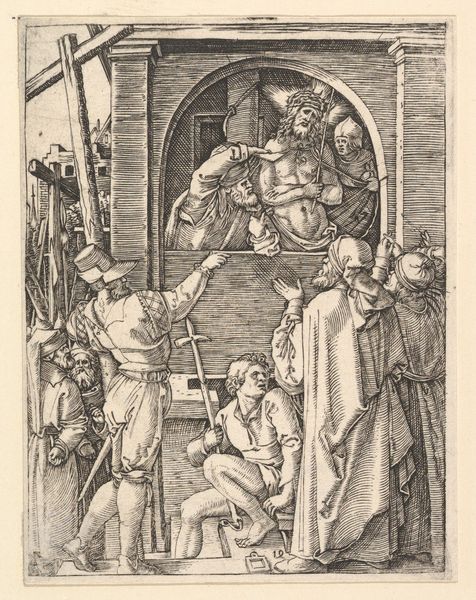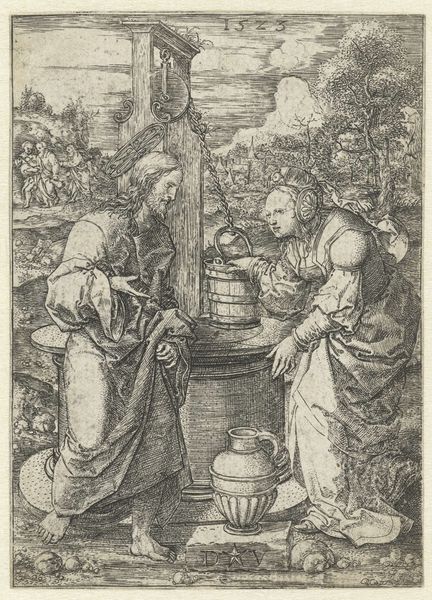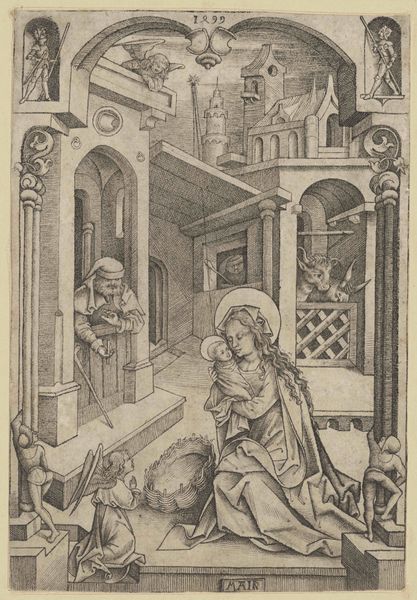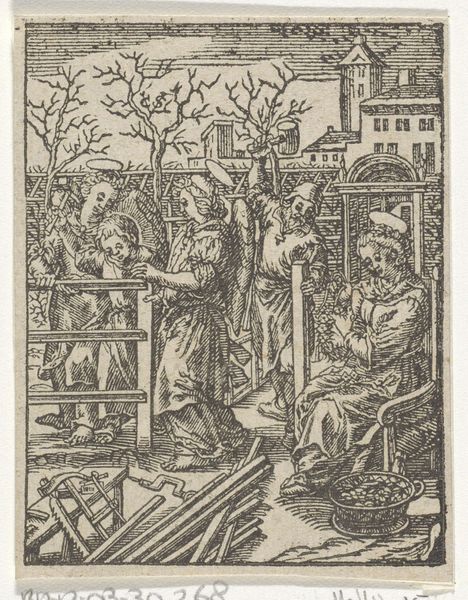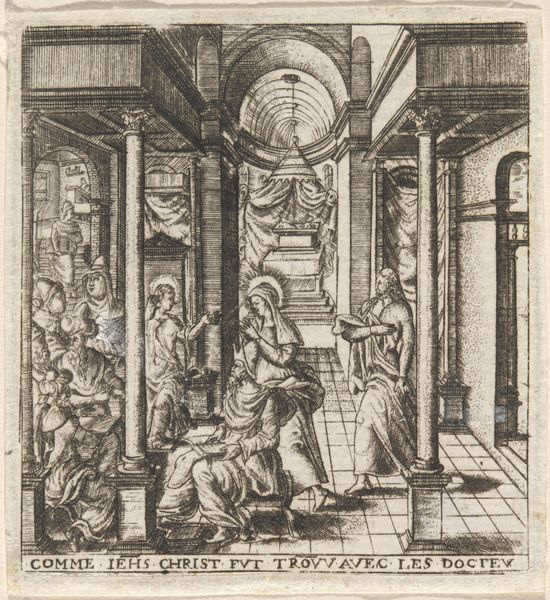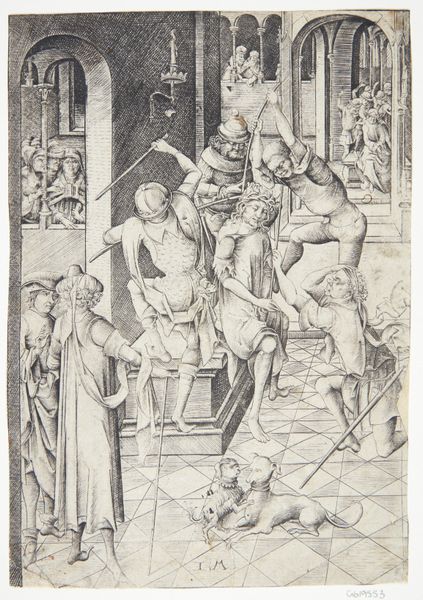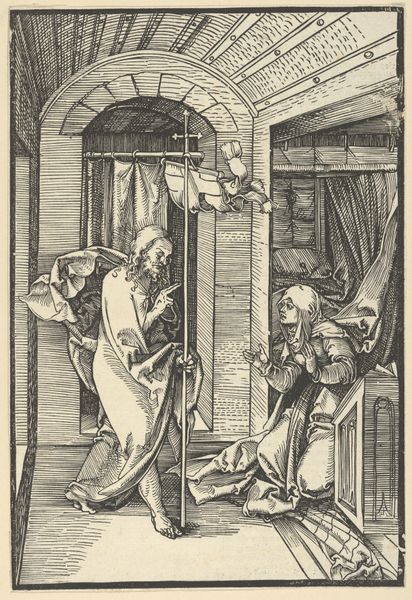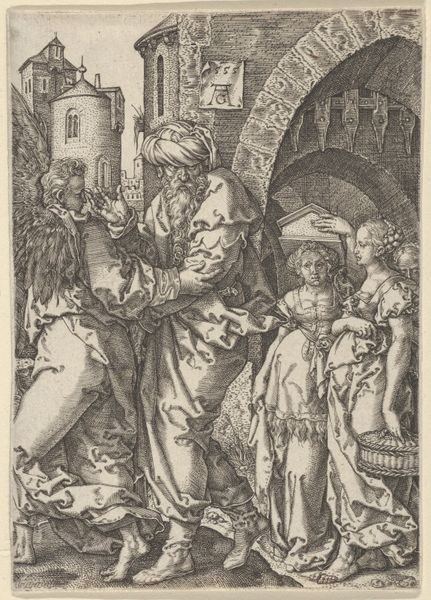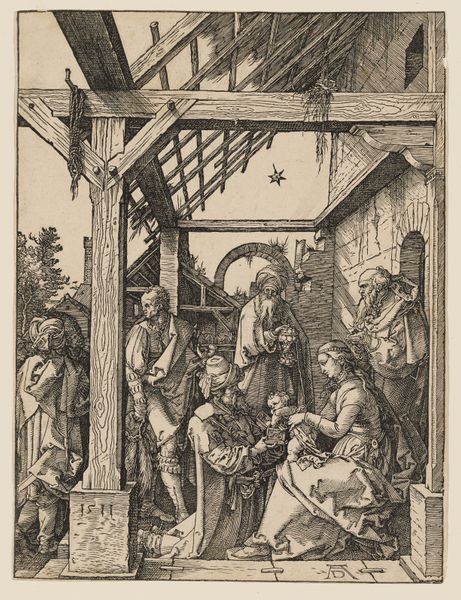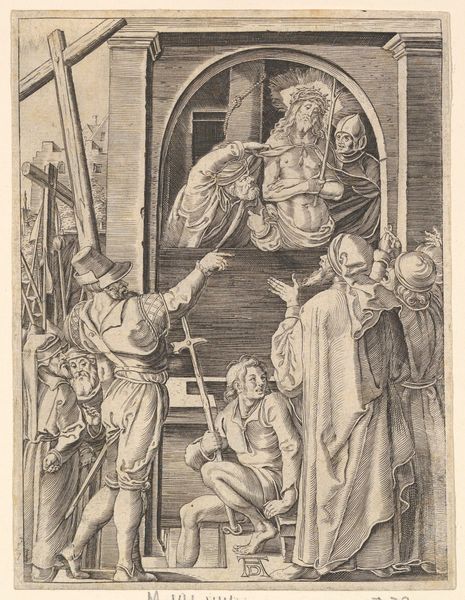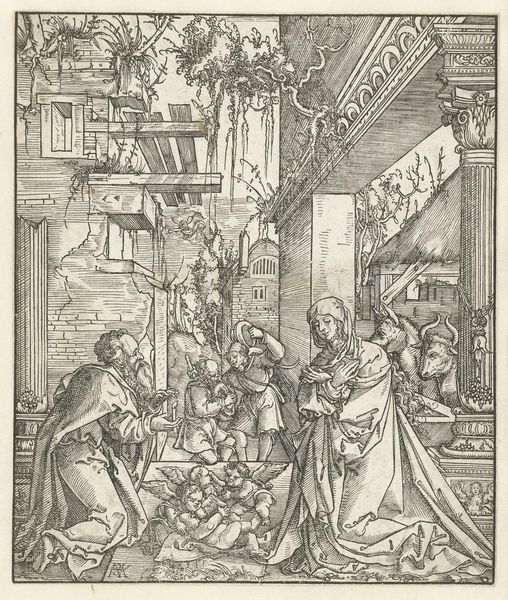
print, engraving
# print
#
pen illustration
#
figuration
#
pen-ink sketch
#
genre-painting
#
history-painting
#
northern-renaissance
#
engraving
#
christ
Dimensions: height 553 mm, width 383 mm
Copyright: Rijks Museum: Open Domain
Editor: This is "Christus en de Samaritaanse vrouw," or Christ and the Samaritan Woman, by Lucas van Leyden, circa 1520. It’s an engraving, which is incredible given the level of detail. I’m struck by how everyday the scene feels, despite the subject matter. What's your perspective on this work? Curator: Well, consider the labor involved in its production. Van Leyden, using an engraving tool called a burin, painstakingly carved these lines into a metal plate. This highlights the sheer skill and time investment involved, defying our typical separation of craft from “high” art of the Renaissance. Editor: That’s fascinating! So you’re saying the *process* itself elevates it, not just the religious subject? Curator: Exactly. Look at the depiction of the well itself, built from individual, engraved "bricks." The well isn't just a setting; it represents a crucial source of life. Water in the 16th century was about labor and material, rather than religious symbolism alone. Consider, also, the woman's vessel and garments in contrast to the materials used to build the well. It makes you wonder about trade. How might these engraved lines reveal to us a narrative of everyday labor and consumption in the Northern Renaissance? Editor: So, by examining the means of production and materials represented, we can gain insights into the social context. Is the printmaking aspect related to materiality too, like a reproducible commodity? Curator: Precisely! These engravings were meant to circulate. Each impression involved labor and materiality in the form of paper and ink, distributed widely for consumption. Van Leyden essentially engaged in the art market in a revolutionary way. Editor: I never considered the role of the *materials* that specifically produced the piece, or their distribution. Curator: By centering our focus on the materiality of this engraving, and thinking about its circulation, we begin to understand the work within a very particular socio-economic context. Editor: Thinking about art in that way gives it a whole new layer of meaning. Thanks!
Comments
No comments
Be the first to comment and join the conversation on the ultimate creative platform.
